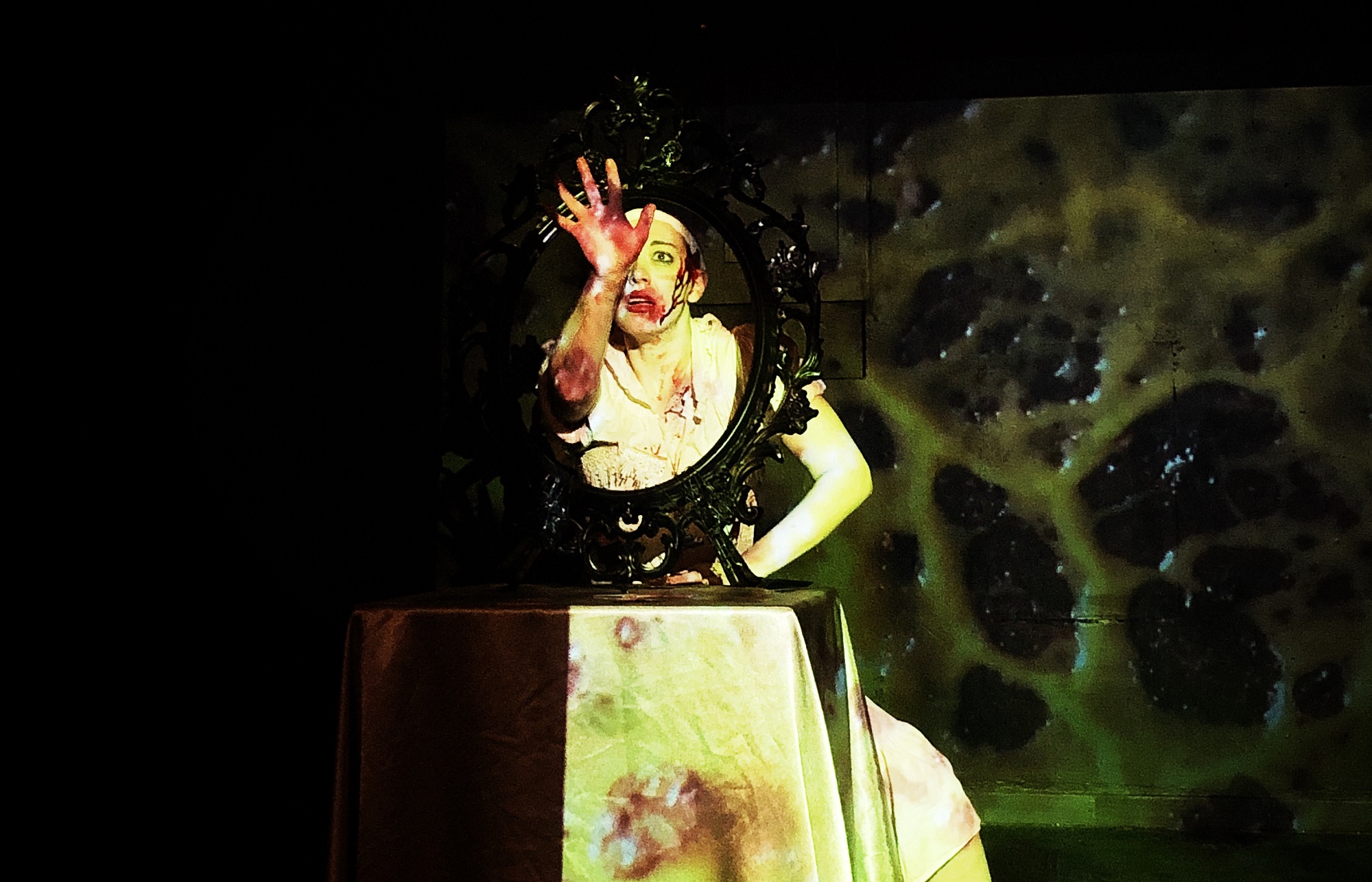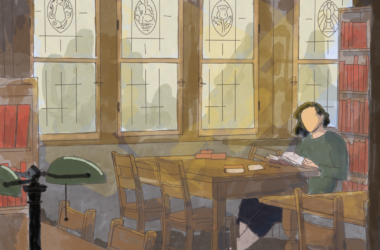Walking past Segal’s, the beloved Saint-Laurent grocery store, you may have noticed the phrase “#FringeBuzz” plastered to the windows on the second floor. Behind those windows is the Minimain, a black box performance space in the Mainline theatre. This is where actor, director, and playwright Natasha Perry-Fagant performed her one-woman show The Absence of Silence on February 20, 22, and 23 during the Festival de la Bête Noire horror festival. Perry-Fagant moved to Montreal from Summerland, British Columbia in 2009 to attend Concordia’s theatre program, where she developed an interest in surrealism. She performed in director Nathalie Claude’s 2010 rendition of Gertrude Stein’s Dr. Faustus Lights the Lights and collaborated with director Jen Cressy on a one-woman performance of Charlotte Perkins-Gilman’s The Yellow Wallpaper. She has since written her own pieces, such as Scrum, a surrealist piece about gender and body dysmorphia.
In the intimate setting of the Minimain, Perry-Fagant’s work was mesmerizing. Her unnamed characters explore solitude and femininity in three acts, their performances ranging in genre with an emphasis on sound and visuals. The show opens with the eerie choreography of a nude creature reacting to a soundscape and projected visuals that slowly creep closer to her. The second act is a gory scene in period-piece costume, while a Yellow Wallpaper–inspired overhead voice muses matter-of-factly on 19th-century life. In the final act, a woman comes home from the store and sets down her groceries. This scene is repeated several times, with each repetition including slight but significant changes, resulting in a Black Mirror–like mind-bending effect.
Like any successful avant-garde piece, The Absence of Silence is difficult to describe. It refuses to collapse into digestible descriptions. Perry-Fagant cites italian theatre director Romeo Castellucci as an influence on her work.
“I saw a piece of his that travelled to Montreal where they had these weird interludes, and there was this huge machine onstage […] whirring and whirring, and there [was] a moment where a bunch of wigs were falling into the machine,” Perry-Fagant said. “Looking at the pieces apart from each other, nothing frightening was happening there, but I was absolutely terrified watching it [….] It made an impression on me of how looking into the subconscious can really draw out feelings from a viewer, and especially a viewer in the sense of being in the theatre, as opposed to the screen.”
The second act is inspired by a The Dollop episode about the history of women and transportation, in which Dave Anthony and Gareth Reynolds joke about how women in the past were expected to ride side-saddle, since straddling a horse was thought to break their hymens and put their wombs at risk. Perry-Fagant wrote the voiceover — in the style of Perkins-Gilman — from the perspective of a woman who injures herself falling from a horse because of this side-saddle mandate. As Perry-Fragrant curls around the frame of a broken mirror and fastens a corset stuffed with shards of glass around her body until her white dress oozes red, it is clear that her movements are not intended to mime the monologue. The dissonance between the florid voiceover describing 19th-century domesticity and the abject, self-imposed suffering onstage creates a sense of loneliness effectively conveyed by both narration and visuals. As an actor, Perry-Fagant wanted to understand how a woman of that time would reflect on her loneliness in that situation without the language of feminism that we have today.
“I wanted to have this kind-of distanced text that describes [those] feelings, but in a way that is not right on the bone of “Yeah I feel like shit, because I feel like I’m worthless”, and kind of aggrandizing that in the 1800s [women might say something more like] ‘Well I don’t think that I quite understand how it’s feeling, but it’s not very good now.’”
With movement-based work, the lack of dialogue forces actors to react more to their environment, but this means that it can also be easier to get distracted by shuffles in the audience or somebody coughing. Rather than being subjected to the whim of her setting, Perry-Fagant takes advantage of this vulnerability and lets invasive soundscapes, which project outward expressions of characters’ inner feelings, guide her performance.
“I find that if people are speaking words at you, it puts you in a cerebral [mental space],” Perry-Fagant said. “You’re analyzing the words, and you’re trying to think of what the author meant. I find that to get at the subconscious of the viewer, it’s easier to aggrandize the emotional experience of the performer [through sound]. […] It’s always been really important for me to have sound [be] a key part of the experience of bringing you into the world.”
COVID-19 has been a shock for the theatre community, with the entire runs of shows cancelled. For a community centered on live performance and gathering, this has shocked the creative routines of many Montreal artists. Perry-Fagant looks for the silver linings in this situation by treating it as an opportunity to allow her future works to percolate: She’s keeping herself busy editing film projects and studying, analyzing, and workshopping future shows.
A previous version of this article incorrectly spelled Perry-Fagant’s name as “Perry-Fragrant.” The Tribune apologizes for this error.








